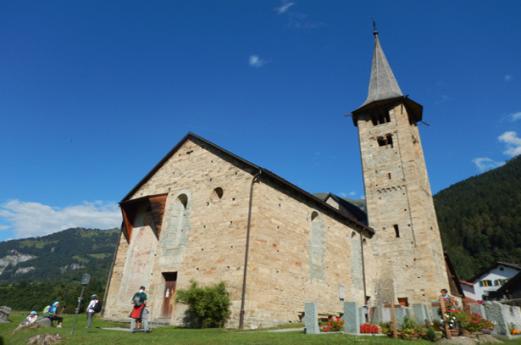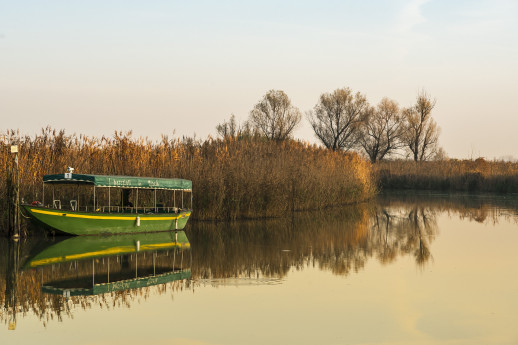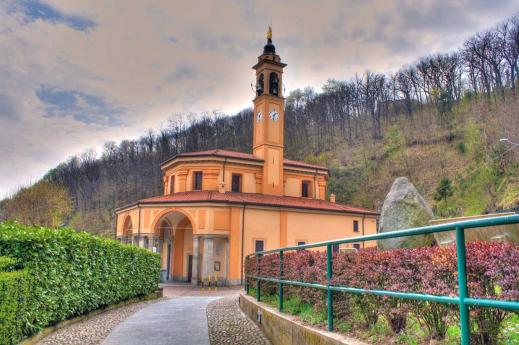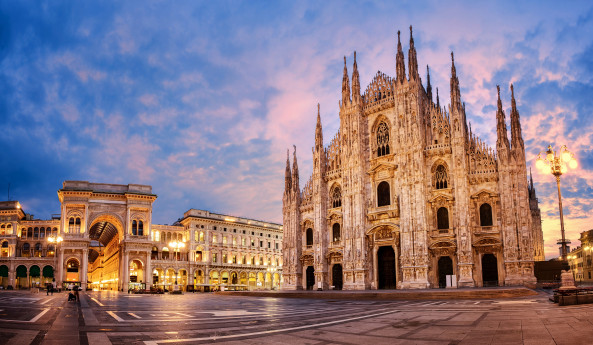- Religious Tourism
- Active & Green
- Mountains
The Saint Columbanus way
The Saint Columbanus way is the route that,crossing the entire area of Eastern Lombardy, once led to Bobbio
The Via di San Colombano is the route that, crossing the entire area of East Lombardy, once led to Bobbio, the site of the famous abbey founded in the heart of the Apennines by theIrish abbot Saint Columbanus at the start of the 7th century.
Columbanus, one of the most influential spiritual figures of his day and known as “the Patron Saint of Europe”, was born in 542 A.D. In 591 A.D., he left Bangor in Northern Ireland with 12 disciples and travelled through Europe for more than 30 years, founding communities and monasteries in what are now modern European states: Ireland, Great Britain, France, Germany, Switzerland, Austria and Italy.
Columbanus and his disciple Gall were key figures in Irish monasticism, the first great monastic movement of Europe, which promoted literacy and education, anticipating
the great monastic movements of the Middle Ages.
Irish tradition, and Columbanus as its disseminator, is responsible for the form of the sacrament of the Confession as we know it today: the individual confession of sins and the possibility of repeating the act several times in life. The route is an opportunity to retrace the steps of the Saint, who crossed the Alps to reach Milan under the ruling Lombards and wasdirected by them to the little town of Bobbio, on the northern edge of the Apennines. Here, Saint Columbanus founded his last Abbey, which became a centre of stability and culture in a period of violence and turbulence and for centuries remained the most influential institution from the religious and cultural point of view in the whole of northern Italy.
Columbanus died in 615 A.D. His mortal remains are preserved in the crypt of the Abbey’s Basilica, where thousands of people arrive every year to venerate his memory.
The Italian route starts at Chiavenna, hugs the east side of Lake Como and continues to Lecco. You will pass through the little towns of Novate, Curcio, Dervio, Bellano and Varenna, known as the “Pearl of Lario”, overlooking the waters of the lake and surrounded by mountains.
Your route continues near another two districts of Lario, Lierna and Abbadia, the starting point of the Sentiero del Viandante, another extraordinary route that will take you on a journey of discovery of the artistic and natural beauty of the lake.
From Lecco, continue by following the flow of the river Adda, through Olginate and Brivio until reaching the Milan area. A quick visit to Melegnano and, in a flash, you will find yourself in front of the Lodi Duomo, one of the largest Romanesque buildings of Lombardy and the city’s most ancient monument.
Completed in the 16th century, the Duomo’s central nave incorporated the gilded copper statue of S. Bassiano, a Gothic sarcophagus altar, medieval frescos and a rare Romanesque sculpture depicting the Last Supper.
Continue to San Colombano, the birthplace at the beginning of the twentieth century of Don Carlo Gnocchi, priest, educator and Italian writer, venerated as blessed by the Catholic church. Continuing along the route, Bobbio is finally reached.
The Saint Columbanus Way is currently being studied and upgraded.
5 REASONS TO COVER THE ROUTE
1. Covering this historic route on foot, it is impossible not to remember that it all began by sea for Columbanus, departing from Bangor in northern Ireland. Travelling along the Lombard stretch, we are actually approaching the end of this incredible walk.
2. On his walk to Milan, Columbanus was received by the Lombard King Agilulf and his wife, Queen Theodolinda. Thanks to the protection they gave him on his journey, he stopped at Bobbio in a place that later born his name, San Colombano.
3. Saint Columbanus, together with some of his disciples, remained for around a year in the Morbegnese territory of lower Valtellina.
4. An excellent D.O.C. wine is produced at San Colombano al Lambro, called San Colombano and known as “the wine of Milan”, thanks to its excellent position and the abundant yield of the vines in the surrounding hills.
5. Spiritual and religious motivations are fundamental in travelling along this way but it is also close to important attractions from the environmental, landscape, cultural, folk music and culinary points of view.




















